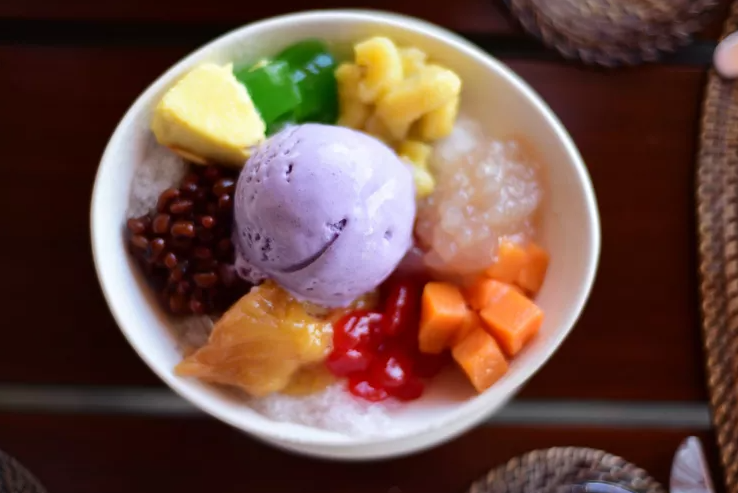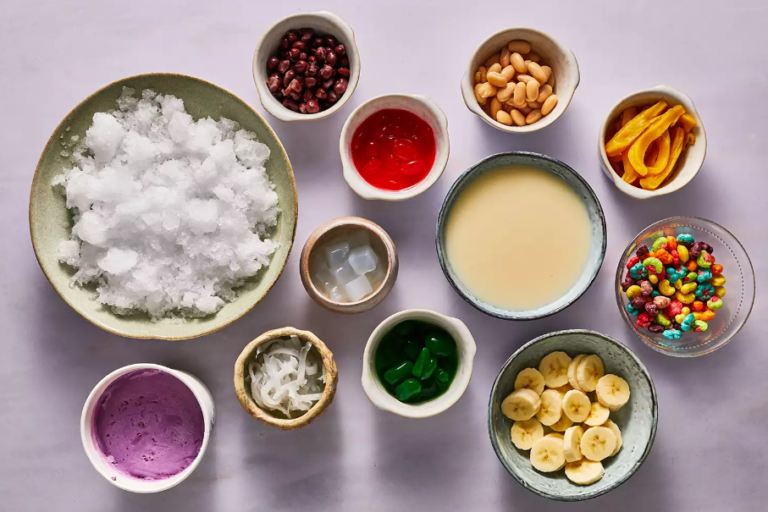Blending Flavors in the Philippines: Unveiling the Tale of Halo-Halo
Until last week, the term “halo-halo,” translating to “mix-mix” in Tagalog, was unfamiliar to me. Yet, during my brief stay on the island of Camiguin in the Philippines following a business trip to Manila, discussions frequently circled back to this intriguing dessert.
Halo-halo holds a prominent place among Filipino desserts, available in almost every eatery and café. By European standards, it’s a delightful yet eccentric treat, blending a variety of seemingly disparate ingredients into a harmonious and enjoyable ensemble often shared among friends. While regarded as quintessentially Filipino, halo-halo’s origins are a testament to the cultural melting pot of the Philippines, influenced by Japanese, Chinese, Spanish, and American migrants throughout history. Historically, it’s believed to have evolved from kakigori, a Japanese shaved ice dessert with sweet beans, introduced by pre-war Japanese settlers. The advent of the Insular Ice Plant in 1902 further popularized it.
Initially, halo-halo comprised cooked red or mung beans in crushed ice with sugar and milk, known locally as mongo-ya. Over time, its composition expanded, culminating in the modern incarnation.
Today’s halo-halo typically features shaved ice, evaporated milk, and sugar or syrup as staples. Beyond these, variations abound, but common ingredients include sugar palm fruit or kaong, coconut sport (macapuno), plantains cooked in syrup (minatamis na saging), candied jackfruit (langkâ), agar jellies (gulaman), tapioca pearls, nata de coco, caramelized sweet potato (kamote), sweetened beans, and pounded toasted young rice (pinipig). Leche flan, though not a standard addition, is popular. Sweetcorn, a peculiar addition to me, is frequently included, reflecting its popularity in Filipino cuisine.
Conversations with Filipino friends evoke nostalgia. Stories of grandmothers meticulously preparing halo-halo ingredients fill the air. While traditional methods persist, convenience has led many to opt for store-bought components. Ube, a purple yam, has surged in popularity, finding its way into jams and ice cream, often featured in “special” halo-halo.
Debate ensues over the inclusion of ube ice cream, with purists arguing it alters the dish’s essence. Yet, it’s increasingly common, emblematic of evolving tastes and global influences on Filipino cuisine. Anthony Bourdain’s praise of halo-halo further propelled its recognition on the international stage.
In the end, as Jose F. Lacaba’s poem suggests, the debate over “special” halo-halo is inconsequential. Whether mixed in the glass or the stomach, the enjoyment remains paramount.
Inspired by my experiences, I’m eager to attempt making halo-halo upon my return to Italy, albeit with potential ingredient substitutions. If you’re likewise inclined, various recipes cater to different tastes and ingredient availabilities, offering a delightful exploration of Filipino culinary culture.



